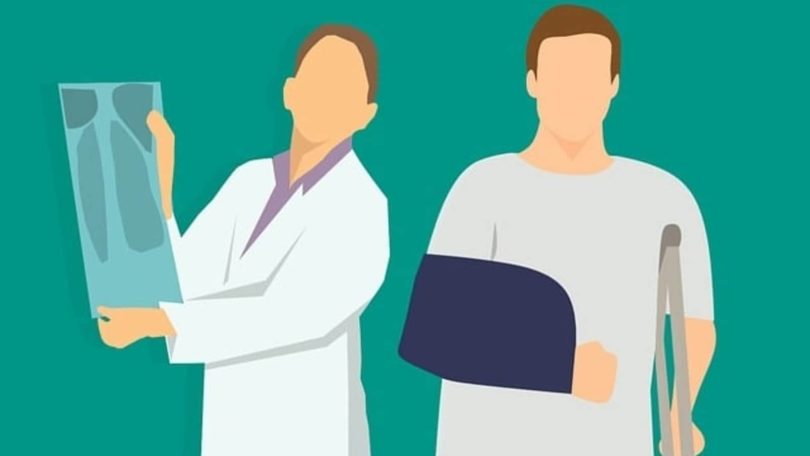[ad_1]
Zarafshan Shiraz, New Delhi
Maintaining healthy joints and bones is crucial for overall well-being and quality of life and preventing orthopedic injuries such as fractures, sprains and strains that can be painful and limit the ability to perform daily activities. Fortunately, several preventive measures, tips and exercises can help one avoid common orthopaedic injuries and keep the joints and bones healthy.

In an interview with HT Lifestyle, Dr Pavan Kumar Chebbi, Orthopedic Surgeon at Apollo Spectra Hospital in Bangalore, suggested the following tips to avoid common orthopaedic injuries –
- Regular exercise: Engaging in regular physical activity is vital for strengthening muscles, improving flexibility, and maintaining bone density. Incorporate exercises that focus on weight-bearing activities, such as walking, jogging, dancing, or weightlifting, as they help promote bone health.
- Warm-up and cool-down: Always warm up before starting any physical activity. This prepares the muscles and joints for the workout ahead and reduces the risk of injury. Similarly, cooling down after exercise helps the body recover and prevents stiffness.
- Proper technique and form: Whether a person is participating in sports, lifting weights, or performing any other physical activity, it’s essential to learn and use the correct technique and form. Improper movements can strain the joints and increase the risk of injury.
- Wear appropriate gear: Use protective gear, such as helmets, knee pads, wrist guards, and appropriate footwear, depending on the activity. This equipment provides support, stability, and cushioning, reducing the impact on the joints and bones.
- Listen to the body: Pay attention to any signs of pain, discomfort, or fatigue during physical activity. Pushing through pain can lead to injuries. If a person experiences persistent pain, it’s important to consult with a doctor.
- Maintain a healthy diet: Proper nutrition plays a crucial role in maintaining healthy bones and joints. Ensure the diet includes calcium-rich foods (milk, yoghurt, leafy greens), vitamin D (fatty fish, eggs, fortified dairy products) and a variety of fruits and vegetables to support overall bone health.
- Avoid overtraining: Give the body sufficient time to rest and recover between workouts. Overtraining can lead to stress fractures and other orthopaedic injuries. Incorporate rest days into the exercise routine and listen to the body’s needs.
Dr Indranil Halder Senior Consultant Orthopaedic and Joint Replacement Surgeon at Ujala Cygnus Group of Hospitals added to the list of tips and exercises that can help you avoid common orthopedic injuries and keep your musculoskeletal system strong –
- Maintain a healthy weight: Excess weight puts additional strain on your joints, particularly in the knees and hips. Maintaining a healthy weight reduces the risk of developing conditions like osteoarthritis. Follow a balanced diet and engage in regular physical activity to achieve and maintain a healthy weight.
- Stay active: Regular exercise helps strengthen muscles, improves flexibility, and supports joint health. Incorporate activities that promote cardiovascular fitness, strength training, and flexibility into your routine. Aim for at least 150 minutes of moderate-intensity aerobic exercise or 75 minutes of vigorous exercise per week.
- Warm up and cool down: Before engaging in any physical activity or exercise, warm up your muscles with dynamic stretches and light aerobic movements. Cooling down after exercise helps your body gradually recover. Stretching exercises during both warm-up and cool-down phases can improve joint flexibility and prevent injuries.
- Use proper form and technique: Whether you’re lifting weights, playing sports, or performing any physical activity, it’s important to use proper form and technique. Incorrect form can strain your joints and lead to injuries. If you’re unsure about the correct technique, consider working with a trainer or coach to ensure you’re using proper form.
- Wear appropriate footwear: Choose footwear that provides adequate support and cushioning for your specific activities. Shoes with proper arch support, shock absorption, and stability can help reduce the impact on your joints. Replace worn-out shoes to maintain optimal support.
- Take regular breaks: If your job or daily activities involve repetitive motions or prolonged sitting or standing, take regular breaks to change positions and stretch. Prolonged repetitive activities can strain your joints and increase the risk of overuse injuries.
- Listen to your body: Pay attention to any signs of discomfort or pain in your joints. Pushing through pain can exacerbate existing injuries or lead to new ones. If you experience persistent or severe pain, consult a healthcare professional.
- Focus on joint-friendly exercises: Incorporate low-impact exercises into your routine to minimise stress on your joints. Activities like swimming, cycling, elliptical training and yoga are gentle on the joints while providing significant health benefits.
- Strengthen the supporting muscles: Strong muscles help support your joints and reduce the risk of injuries. Include exercises that target the muscles around your joints, such as leg lifts, squats, lunges, and core-strengthening exercises. Consult a fitness professional for guidance on appropriate exercises for your specific needs.
- Prioritise rest and recovery: Give your body sufficient time to recover between workouts or intense activities. Rest allows your muscles and joints to heal and rebuild, reducing the risk of overuse injuries.
By following these tips and incorporating regular exercise and healthy habits into the lifestyle, one can significantly reduce the risk of common orthopaedic injuries. Remember to consult with a doctor/orthopaedic surgeon/healthcare professional or a physical therapist for personalised advice and guidance based on the individual needs, fitness level and limitations.
[ad_2]
Source link








